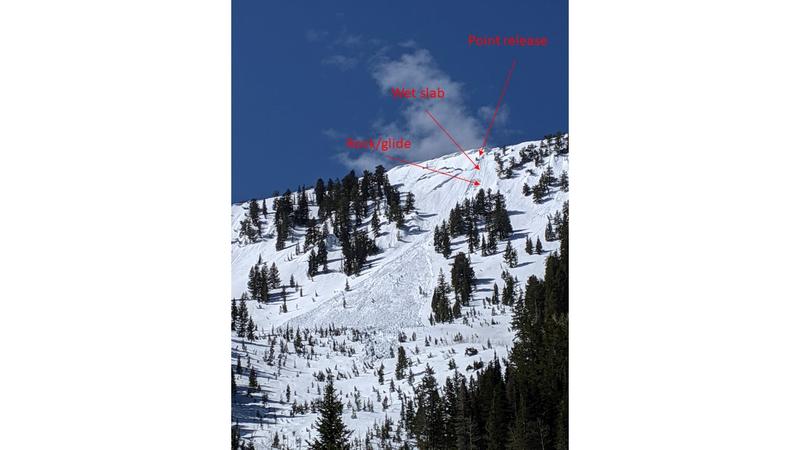The overall avalanche danger is LOW, possibly rising to MODERATE this afternoon due to warming of the snowpack. In general, wet avalanche activity is managed most effectively by timing - once the snow surface becomes wet and sloppy, it is time to move to a shadier aspect. Watch for signs of wet, loose snow including rollerballs and sluffing in the wet snow.
However, avalanche concerns in the spring can become complicated, and three other concerns to watch for today include:
1.
Wet Slabs -
Wet slab avalanches occur when meltwater from rain or warm temperatures percolate down through the snowpack and weaken the bonds (strength) of a buried weak layer. These avalanches can be human-triggered, but also occur naturally, including triggering from a small, wet-loose avalanche or cornice fall. (See Thursday's
Porter Fork wet slab as Exhibit A.) Colder temperatures should lock up the snowpack this morning, but strong sunshine today could provide enough warming to trigger isolated wet slabs. These could occur on any aspect facing west, south, through east, as well as northerly aspects up to about 10,000'.
2. Glide Avalanches - A separate but related avalanche problem is
glide avalanches, and several occurred midweek during a period of warm temperatures.
When they happen is mostly
unpredictable, however,
where they happen is generally
predictable because there is often a huge crack in the snowpack. Common places to find glide avalanches are places with rock slabs or a smooth ground surface like Broads Fork, Stairs Gulch, and Mill B South, and upper Raymond Slabs in upper Porter Fork.
Simply avoid being under these places or any slope with a visible glide crack.
3. Cornices - Cornices in some places are massive, and they can break off naturally, especially during warm weather when they start bending downhill. Simply avoid being underneath or near the tops of large cornices as they break farther back than expected.










